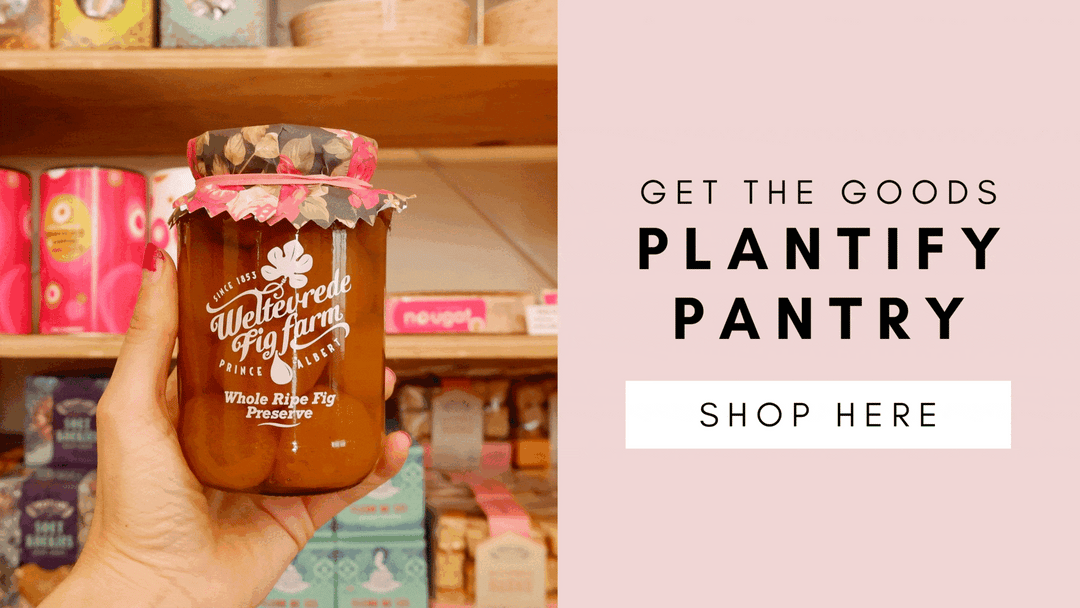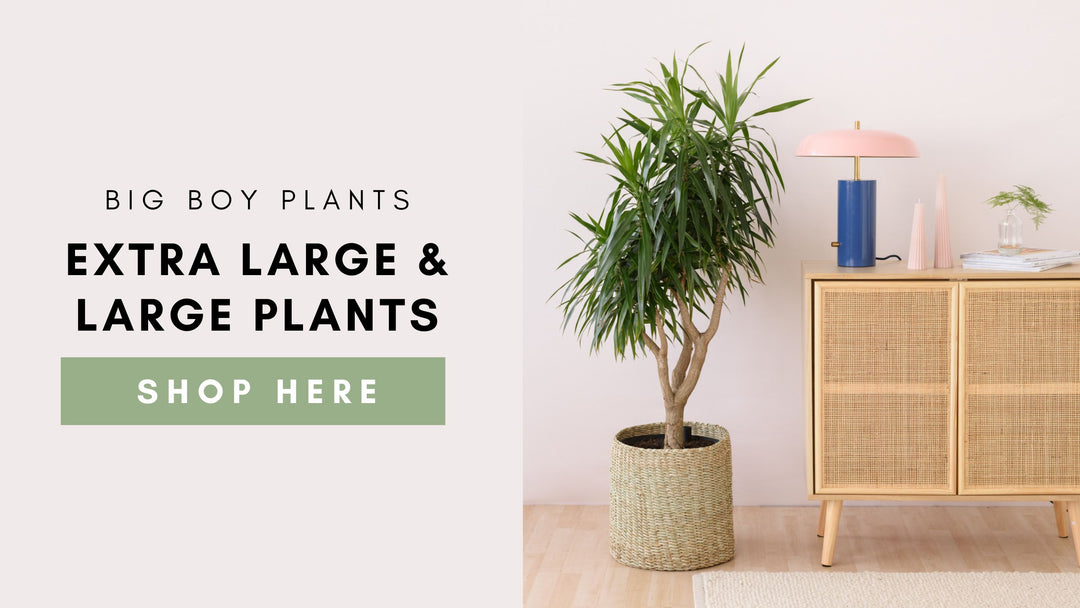Rubber Tree Care Instructions
Scientific name: Ficus Elastica
Synonym: Rubber Tree , Rubber Fig, Rubber Bush, Rubber Plant, Indian Rubber bush, Indian Rubber Tree
The Rubber Plant is a ubiquitous indoor feature tree known for its large oval leaves, often in a variety of colours. They appear in shades of burgundy and deep greens, as well as variegated forms, including the very elegant Ficus Tineke.
For many centuries, Ficus Elastica have been a popular tree due to their commercial uses and landscaping uses. It is named for the latex that it produces, that when dried, turns into a low-quality rubber, that has been used as an alternative to the bulk of naturally produced rubber of Hevea brasiliensis.
This plant is popular among houseplants because it is easy to care for, has quick growth abilities, and can grow up to 3m indoors, whilst requiring little care. As an outstanding statement plant, its ability to grow from a small potted plant to a large tree is exceptional.
Rubber Trees are relatively hardy and tolerant of a variety of conditions. In contrast to Burgundy and Variegated varieties, green varieties do well in lower lighting conditions, adding to thier versatility. A low-maintenance plant, they prefer both moderate temperatures and water to do well. Even if things do go awry in their care, they tend to recover quickly.
As they begin to reach their more furniture plant size, they make excellent floor level candidates. While smaller varieties make a beautifully elegant tabletop arrangement. Overall, the Rubber Plant is a great houseplant for beginners and experienced gardeners looking for something that can grow large and be reliable.
Please note: the latex in Rubber Trees is considered toxic.
Rubber Tree Common Symptoms
- Leaves Fall Off: This may be caused by too frequent moving of the plant – keep it in one place and let it settle there. Drastic changes in temperature will also cause leaf drop. Regulate temperature to address this. Take note however that it's perfectly natural for older, lower leaves to fall off. Other causes of excessive leaf drop include keeping the soil waterlogged for long periods. It is best to allow your plant to reach near dryness before watering again. For more on leaf loss and how to fix, see below.
- Yellow Leaves: This is a sign of overwatering. Reduce your watering, ensure that the soil dries out slightly between each watering. Click for more on Identifying overwatering vs Underwatering.
- Dull drooping foliage: This is an indication that your Rubber Tree may be underwatered, giving your plant a dull lifeless appearance. Assess your watering frequency and ensure to water once the soil has reached near dryness. Avoid long periods of dry soil. Click for more on watering houseplants.
- Sooty Mold: Can grow on the leaves, this is a sign of low ventilation. Add more air to the room by opening a window or placing a small Fan in the room to move the air around. Then, simply remove it by wiping off the affected leaves with mild soapy water, such as with a very dilute mixture of water and Sunlight liquid, otherwise treat with a fungicide such as Copper Soap.
- Pests: The Rubber Tree is known to be relatively pest resistant, and often can fend off pests on their own. Though most common houseplant pest infestations should be dealt with immediately when noted to avoid spread to other plants. Treat any infestation with a good quality organic pesticide such as a neem based oil or Pyrol. Click for more on Houseplant Pests.
How To Deal with Leaf Loss in Rubber Trees
If your lush prized Rubber Tree is experiencing leaf drop, especially from the bottom of the plant with bare stems starting to appear, this is often a normal response to a change in environment. A transition, like taking a plant from a greenhouse environment to a home with entirely different lighting and climate conditions, can set off such a reaction. It’s normal for Rubber Trees to take some time—up to three months—to adjust to these new surroundings.
- Ensure Consistent Watering: Rubber trees are particularly sensitive to both overwatering and underwatering, which can lead to bottom leaf drop and bare stems if left unchecked. Keep the soil evenly moist, but avoid waterlogging. Check the soil regularly, and water only when the top 6–10 cm feels dry; this could range from every 7 to 10 days. For large plants, the soil may take longer to dry out; keep this in mind when checking soil moisture. Consistent moisture helps prevent stress and leaf loss, especially at the base. Make sure there’s no standing water in the tray after watering, as waterlogging can exacerbate leaf drop. If you struggle to gauge the soil moisture, consider a Moisture meter.
- Maintain Stable Temperatures: Ficus in general dislikes sudden temperature changes, which can shock the plant and accelerate leaf drop. Avoid placing your plant near cold drafts, heating equipment, or air conditioning. Aim for a steady temperature between 15 and 24 °C to minimise stress. If you have a tiled space, temperature fluctuations can be more pronounced; over time, as the environment stabilises, your plant’s condition should improve. Patience is key here.
- Gradually Adjust Light Exposure: Rubber Trees thrive in bright, indirect light. Rapid changes in lighting, like moving the plant from low light to direct sunlight, can shock the plant, leading to leaf drop and spindly growth. Gradually introduce your plant to brighter light over several days. Ideally, place it in a location where it can receive soft, direct morning sunlight for a maximum of 3 hours to support recovery. Position it at least 30 cm away from a window to avoid scorching, as glass can intensify sunlight, acting as a magnifying glass.
- Increase Humidity: Ficus can suffer from low humidity in dry indoor environments, which can result in leaf drop. Boost humidity by misting the leaves regularly, using a pebble tray (a shallow tray with pebbles and a small amount of water), or placing a humidifier nearby to maintain a comfortable humidity level for the plant. Humidity can play a big role in keeping the leaves intact, especially on the lower parts of the plant.
- Avoid Frequent Relocation: Rubber trees are sensitive to being moved, which can result in shock and further leaf drop, particularly affecting the lower leaves first. Once your Ficus tree is in a suitable location, avoid relocating it unless absolutely necessary. If you must move it, do so gradually over several days to allow the plant time to adapt.
- Feed Lightly with a Seaweed Fertiliser: During the growing season (spring and summer), fertilise your Rubber Tree sparingly with a seaweed-based fertiliser, such as Kelpak. Seaweed fertilisers contain natural growth hormones that aid plants in stress recovery and encourage new growth. If the plant has dropped many leaves, prune lightly to help it focus energy on recovery, encouraging new leaves to form along the stems and fill in the bare areas.
Rubber Tree Care Instructions
- Origin: Native to eastern South Asia and southeast Asia.
- Height: Up to 3 meters tall indoors, Outdoors around 12m
- Light: Best in bright filtered light with no direct sun, as this may scorch the leaves. Dark green varieties will tolerate lower lighting conditions, but may grow slowly.
- Water: Keep soil evenly moist. Be careful not to overwater. Once a week should be fine.Keep leaves dust-free and shiny by gently wiping them off with a damp cloth regularly. Watering Tip:Give your Rubber Tree a good soak once a month by placing it in your bathtub for 10 – 20 minutes. Do this only if your plant is still small enough to move. This eliminates any dry patches that may not get moisture during regular watering.To be water efficient, place the plant pot in a round pan within the bathtub, and using a smaller jug, continue to water the top of the plant with the water that has already drained out.
- Humidity: Relative humidity of 40-60%. No adjustment to humidity should be necessary. Regular room humidity is fine.
- Temperature: Normal room temperatures 16 – 24°C. Avoid sudden changes in temperature
- Soil: A well draining potting soil with some water retentive properties.
- Fertilizer: Feed with a good quality fertilizer during active growth, Spring through Summer as these are hungry plants due to their fast growth. Soil can be depleted of nutrients within a year, for this top dress with fresh soil every Spring. Only feed in Winter if plant is actively growing.
- Propagation: Take stem cuttings in spring. To keep its sticky, white sap from forming a cap on the base of the cutting, place the tip in water for 30 minutes. Remove from the water and dip only the cut surface in rooting hormone. Then, insert it into moist potting mix to root.
If in stock, shop for Rubber Tree here.





